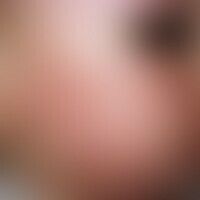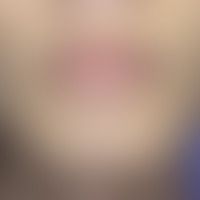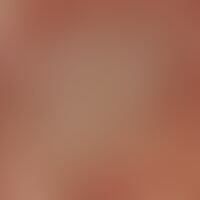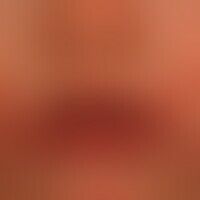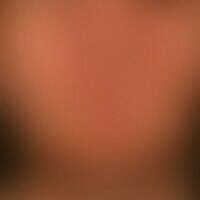Image diagnoses for "Nodules (<1cm)", "Face"
113 results with 250 images
Results forNodules (<1cm)Face
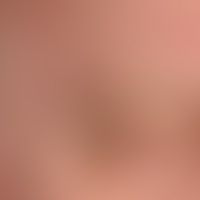
Sebaceous hyperplasia senile D23.L
Sebaceous gland hyperplasia: Soft, yellowish papules which have existed for years, slowly increasing in size; in the middle of the picture 2 sebaceous cysts which are the maximum form of a sebaceous gland hyperplasia.
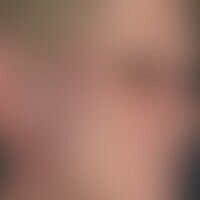
Xanthogranuloma necrobiotic with paraproteinemia D76.3
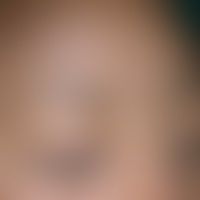
Acne papulopustulosa L70.9
Acne papulopustulosa: in acne-typical distribution, red-brown papules and papulo-pustules in different stages of development.
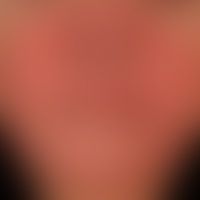
Rosacea papulopustulosa
Rosacea papulopustulosa: disseminated, intermittent papules and pustules that persist for weeks on reddened skin (questionable pretreatment with a glucocorticoid externum); variable feeling of tension of the facial skin.

Leprosy lepromatosa A30.50
Leprosy lepromatosa: gradually developing finding with few inflammatory plaques and nodules for many years.
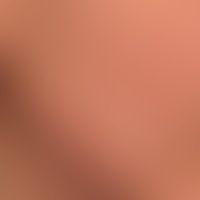
Acne papulopustulosa L70.9
Acne papulopustulosa: numerous inflammatory papules and pustules. few scars. numerous skin-coloured comedones

Darian sign
Urticaria pigmentosa of childhood: extensive redness and urticarial reaction in the lesions after mechanical irritation.
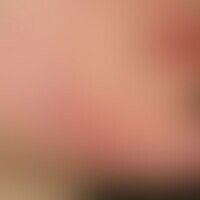
Acne papulopustulosa L70.9
Acne papulopustulosa: In acne typical distribution, red smooth and excoriated papules and some pustules.
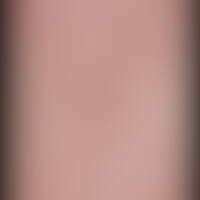
Sebaceous hyperplasia senile D23.L
Sebaceous gland hyperplasia, senile. 74-year-old patient noticed these completely asymptomatic skin changes several years ago. In large-pored (seborrhoeic) skin of the forehead region there are waxy, slightly raised papules up to 0.4 cm in size with a slightly lobed edge structure (see papule top right). The diagnosis of sebaceous gland hyperplasia is fixed at the central porus formation (see papule in the center of the picture).
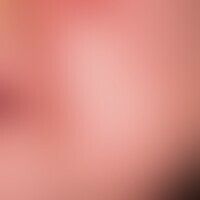
Acne infantum L70.40
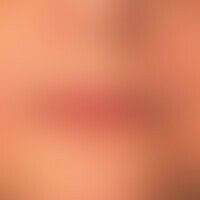
Wrinkle treatment
Wrinkle treatment with filling materials: the ideal filling material is biocompatible, without allergenic potential, has a good long-term result, no side effects and a natural appearance. 8 weeks after injection of an unknown filling material, development of foreign body granulomas, which can be felt as solid deep conglomerates.
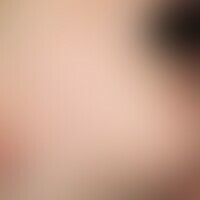
Gianotti-crosti syndrome L44.4
acrodermatitis papulosa eruptiva infantilis. exanthema of a few days old on the face, on the trunk (very discreet) and the extremities. disseminated, 0.2-0.4 cm large, red to reddish-brown papules with smooth surface. on the earlobe flat, succulent erythema with several, in places aggregated, rich red papules and vesicles.
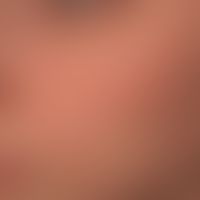
Rosacea L71.1; L71.8; L71.9;
Rosacea lupoide: non-itching, multiple, follicular yellow-brown papules that have existed for several months DD: demodex folliculitis can be ruled out
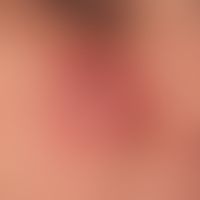
Lupus erythematodes chronicus discoides L93.0
Lupus erythematodes chronicus discoides: succulent, hyperesthetic plaque with adherent scaling, 2.7x3.2 cm in size, existing for 4 months, no evidence of systemic LE. DIF with typical pattern.
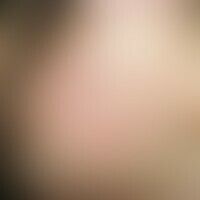
Acne infantum L70.40
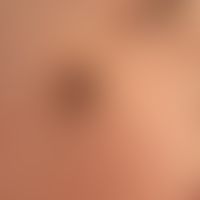
Naevus melanocytic common D22.-
Nevus melanocytic common: Copoun-type melanocytic nevus existingsince early childhood.
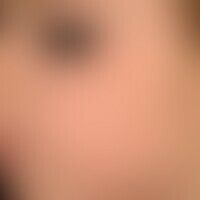
Verrucae planae juveniles B07
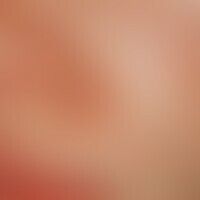
Multiple Trichoepithelioma D23.-
Trichoepitheliomas: bulging elastic skin-coloured nodules and nodules in the nasolabial fold; multiple, rough, hemispherical, 0.2-0.5 cm large, partly glassy, skin-coloured or red, symmetrically arranged nodules
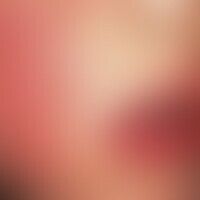
Erythema perstans faciei L53.83
Erythema perstans faciei. persistent, butterfly-shaped, livid red erythema in a 3-year-old boy with vitium cordis (pulmonary stenosis, subaortic stenosis, vascular transport and ventricular septal defect).
